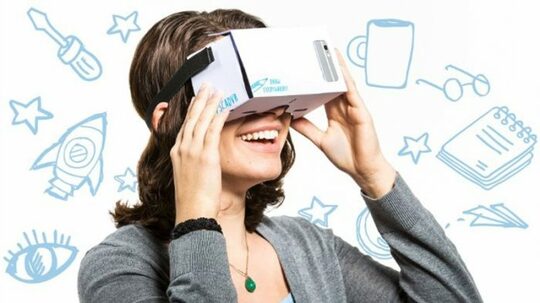5 Ways to Use Virtual Reality in Your Marketing Strategy
For most people, virtual reality sounds like an imaginary concept from science fiction, but in reality, VR has been present on the market for quite some time.
By definition, virtual reality is "computer-simulated surroundings which have the capacity to simulate physical presence in real or imaginary worlds".
Virtual reality (VR) is predicted to completely disrupt the shopping experience. According to Goldman Sachs, the estimates of VR investments (including augmented reality) will reach 1.6 billion dollars until 2025.
While many brands are making an effort to become a part of the VR ecosystem, they are not quite familiar with the ways of improving the brand experience for all consumers and with the contexts where VR technology could and should be used. At the same time, many marketers wonder whether now is the right time to invest in VR.
VR apps include automated virtual environments (AVEs), such as headsets, virtual glasses, games, 360 computer simulations and the virtual world such as Second Life.
For example, Swarovski partnered up with Mastercard to create a virtual atelier which anyone can access after downloading the app. Next to getting information about a particular collection or a product, customers can also do virtual shopping.
Recent research pointed out that marketers should have different approaches to VR depending on their industry or sector. For example, apps that completely captivate the user into a virtual world are better for consumer education, such as Lowe's DIY Holoroom, or to create a relationship with the brand, such as in the case of a virtual shopping consultant in Second Life.
Here are some of the best examples of the use of VR in marketing:
Tesco - Virtual Store Browsing
Investing in physical space takes a lot of time and money, so the possibility of understanding customers, their needs and desires (regarding layout, colors, offer, etc.) at a low price is the dream of every retailer.
British supermarket chain Tesco enabled its shoppers to browse around their virtual storebefore they have actually built the object.
The goal of this marketing project was to study customer behavior as they "wander" the e-store. Tesco managed to find out numerous useful pieces of information which served them through better strategic planning of shelves, layout and more.
Using virtual reality technology, Tesco saved money and time necessary to plan the element layout within a retail store.
If we look at the achievement of this project as a big picture, it shows that VR could easily replace physical shopping and make the process of grocery shopping much easier for customers and cost-effective for the company.
Product Customization
Furniture manufacturer IKEA already took advantage of the new VR trend to provide an unforgettable experience for their customers.
IKEA shoppers can view their desired kitchen in natural size and use the versatile options and settings to independently design the final product.
The same strategy is obviously very applicable in other sectors, as well. For example, the fashion industry could be the first to widely accept VR in product customization.
Coca-Cola - Virtual Sleigh Ride
In 2015, Coca-Cola experimented with VR technology and enabled passers-by to experience a virtual sleigh ride. The crowd was absolutely thrilled with the project and the feeling of being Santa, even for a little while.
This modern approach to marketing enabled Coca-Cola to strengthen its brand position and awareness, and to provide a completely new experience for users who had a chance to see Christmas from another perspective.
"The same approach could be used in games, prize raffles and sweepstakes: using virtual reality, brands can present games that will include products, discounts and other prizes for their great score," says Estelle Leotard, a contributing writer for Subjecto and Studyker.
Volvo XC90 - Test Drive
In 2019, Volvo allowed potential shoppers to see the car in a completely different light by enabling a virtual test drive of the new model through a VR app.
Even though the cutthroat, competitive automotive industry doesn't regard Volvo as among the most "cutting-edge" marketers, the VR experiment definitely proved to be a step forward which made Volvo stand out from its competitors.
VR in Mobile Apps
There is also huge potential in implementing VR in mobile apps on smartphones. Using this technology, brands could get an additional possibility of communicating with shoppers in a unique way.
Conclusion: Why is VR Effective in Marketing?
Marketing agencies have started opening specialized departments for virtual reality. But, is it still too early to implement this technology in marketing?
VR in marketing provides a physical experience for shoppers and enables them to simulate the use of a product before deciding to buy it. Therefore, VR is a significant opportunity both for manufacturers and shoppers, and offers limitless possibilities.
The efficiency of VR depends on the app itself and consumer behavior. One of the key aspects is fluidity - creating an environment where customers feel completely submerged and active in a virtual world.
This guest article was written by Bridgette Hernandez, a Master in Anthropology who is interested in writing and is planning to publish her own book in the near future. She works with professional writing companies such as TopEssayWritings and ClassyEssay and as a writer, Brid also does some editing work WriteScout.


